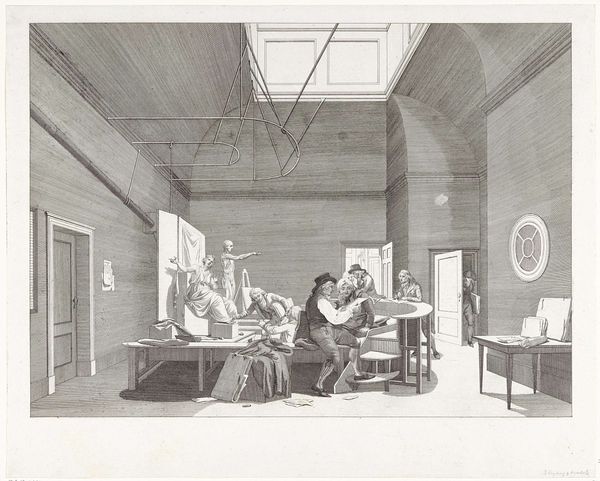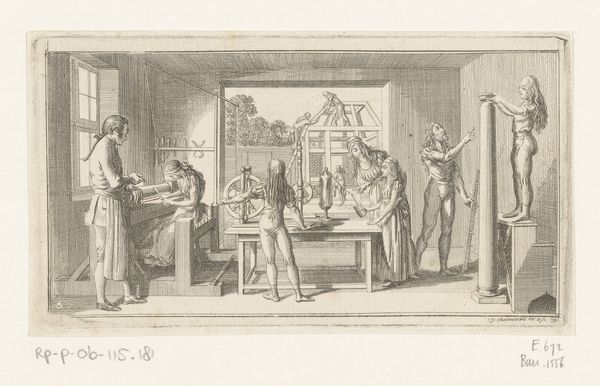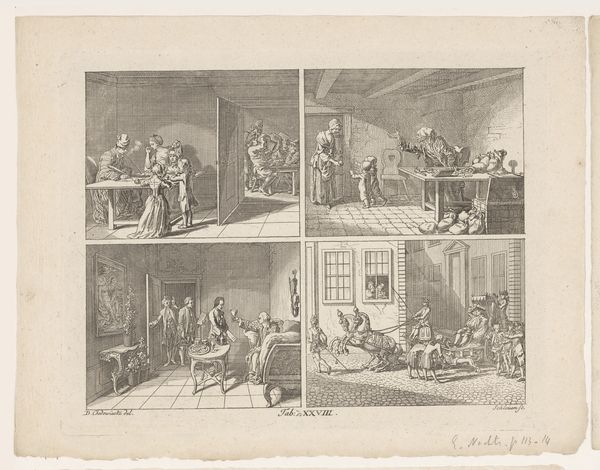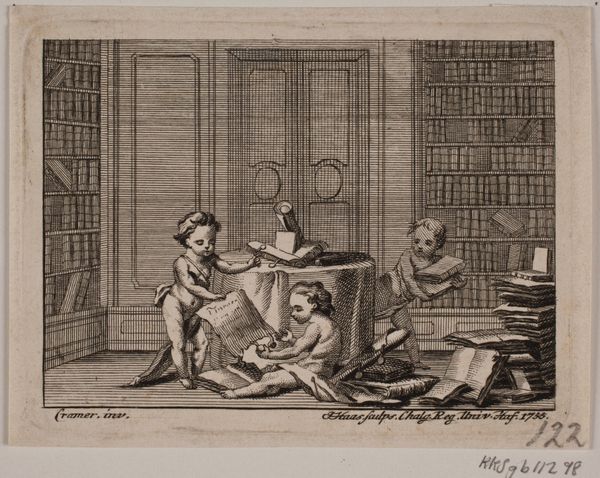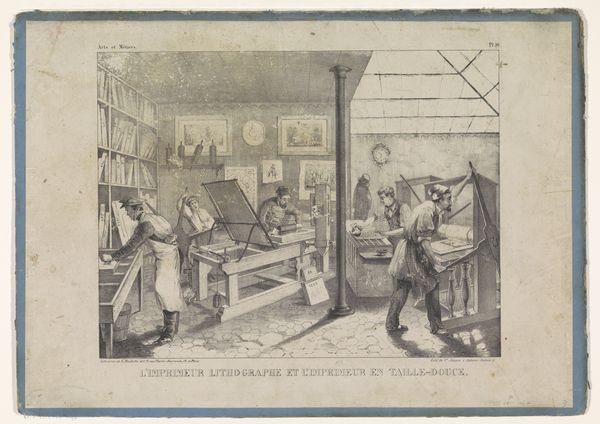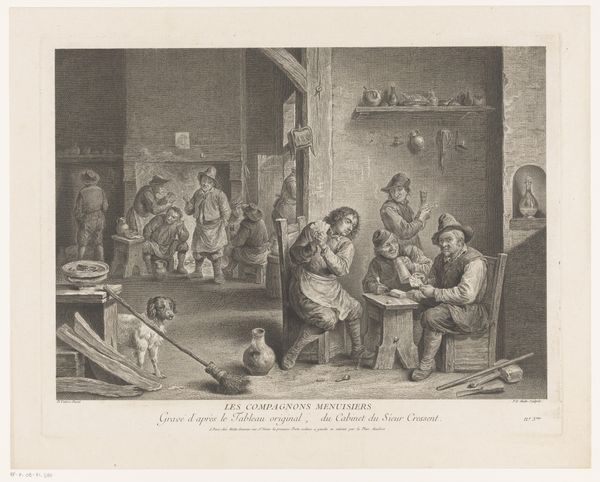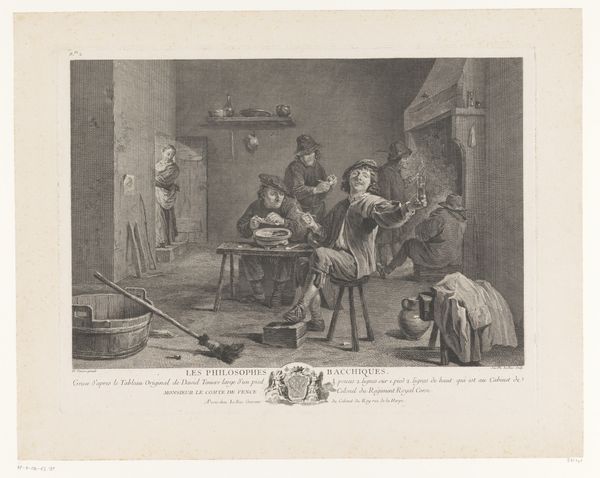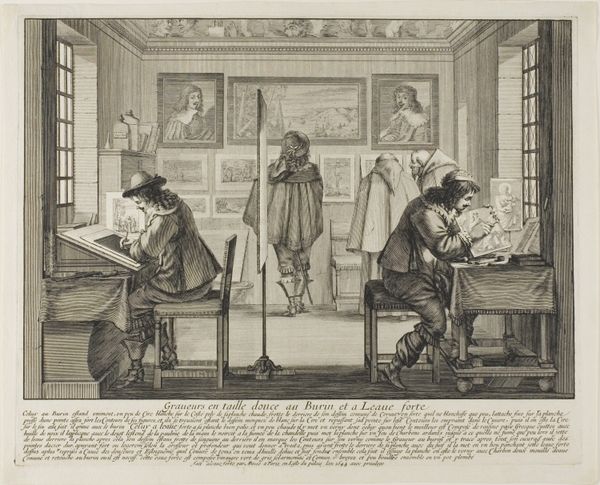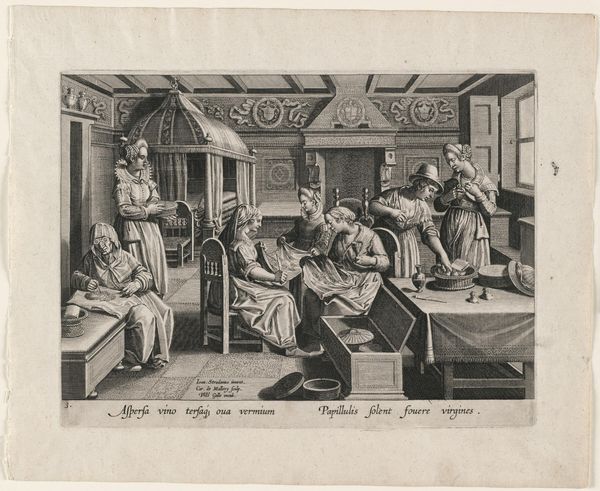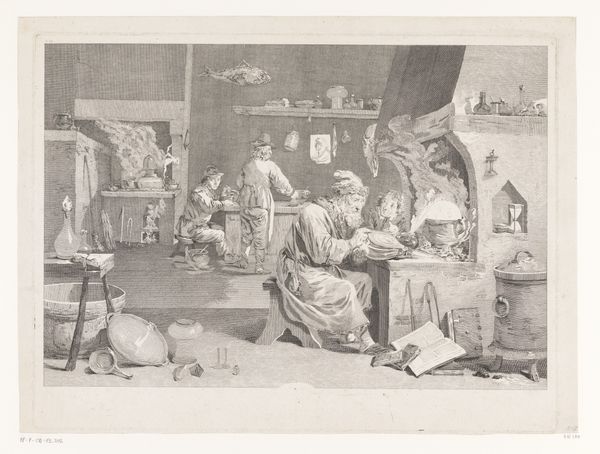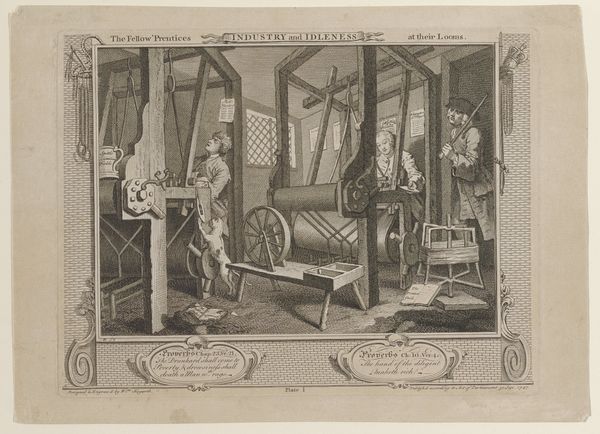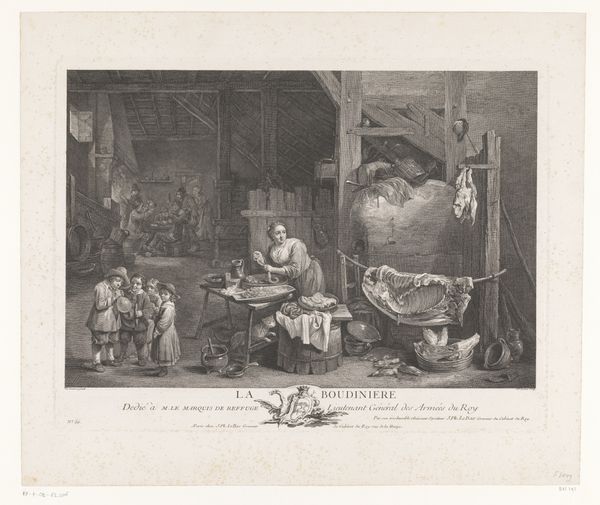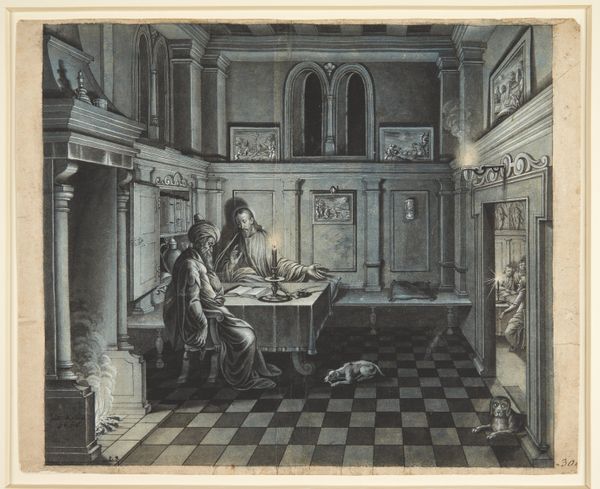
The Drawing Academy at the Felix Meritis Society in Amsterdam 1795 - 1805
0:00
0:00
drawing, print, engraving
#
drawing
# print
#
figuration
#
historical fashion
#
19th century
#
line
#
cityscape
#
genre-painting
#
history-painting
#
academic-art
#
engraving
Dimensions: Sheet: 16 3/4 in. × 21 in. (42.5 × 53.3 cm)
Copyright: Public Domain
Curator: This is Reinier Vinkeles’ print, "The Drawing Academy at the Felix Meritis Society in Amsterdam," dating from around 1795 to 1805. What catches your eye? Editor: It's so contained, so orderly! The students seem absorbed, the room precise, with the cool daylight streaming from above creating these wonderfully soft shadows. A feeling of diligent intellectual labor. Curator: Exactly. Vinkeles, a skilled engraver, documents not just a drawing lesson, but also the physical and social setting of artistic production at the time. The drawing academy was itself part of a larger Enlightenment project. Look closely at the tools scattered about – easels, drawing boards. What do they suggest? Editor: They are the symbols of artistic discipline. But look, there is an almost neoclassical composition. Those figures arranged around the model, their postures recalling antiquity, but also... Enlightenment reason. I almost feel like this image encapsulates this era, from its architecture to the fashion to the people. Curator: And think of the engraving process itself – the labour, the skill needed to replicate this scene in lines, to translate a three-dimensional space onto a flat plane, using burin and metal plate. The Felix Meritis Society itself aimed at ‘public enlightenment’. And, to your point, it even extends to how that light emphasizes certain forms over others. Editor: Indeed, notice how that artificial studio lighting focuses our gaze on the act of artistic creation—highlighting those working hands and concentrated expressions! A fascinating comment on observation and instruction! It reinforces, almost theatrically, how the Enlightenment’s gaze turned inward upon itself. Curator: Precisely, and that interplay between intellectual ideas of production with the techniques and facilities needed to do so were essential. A space to exchange, learn and critique as a means of creation, not simply a technical studio, or workshop. Editor: Ultimately, this reminds us that even apparently objective spaces are loaded with symbolic power, that what appears casual to us is carefully curated by an author's perspective. Curator: The detail lavished here turns everyday labour into something truly monumental, a snapshot into what can be created in concert with each other. Editor: Thank you, it leaves one to imagine the dialogues within that studio today and to see where we find ourselves, perhaps somewhere similar in our era!
Comments
No comments
Be the first to comment and join the conversation on the ultimate creative platform.
